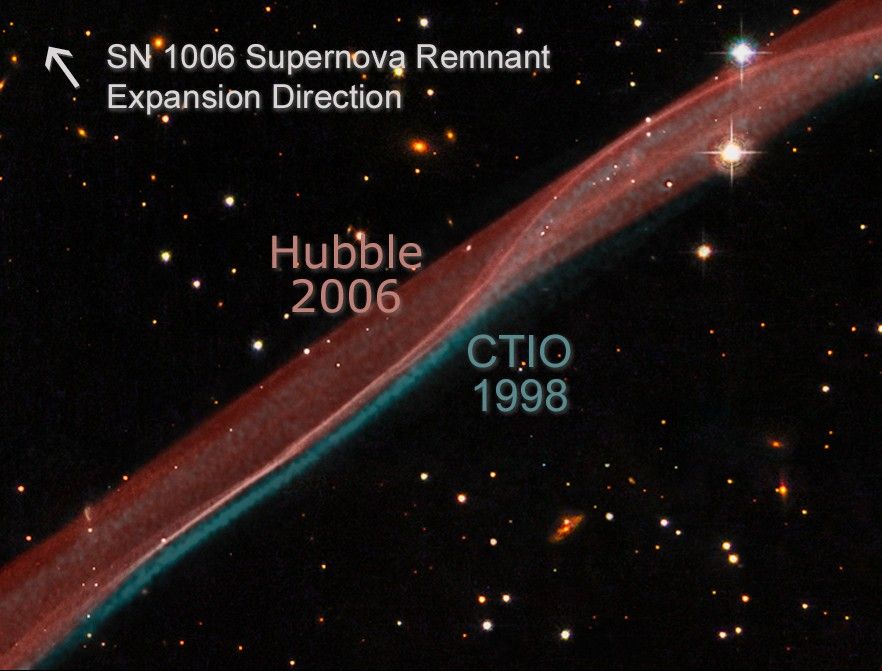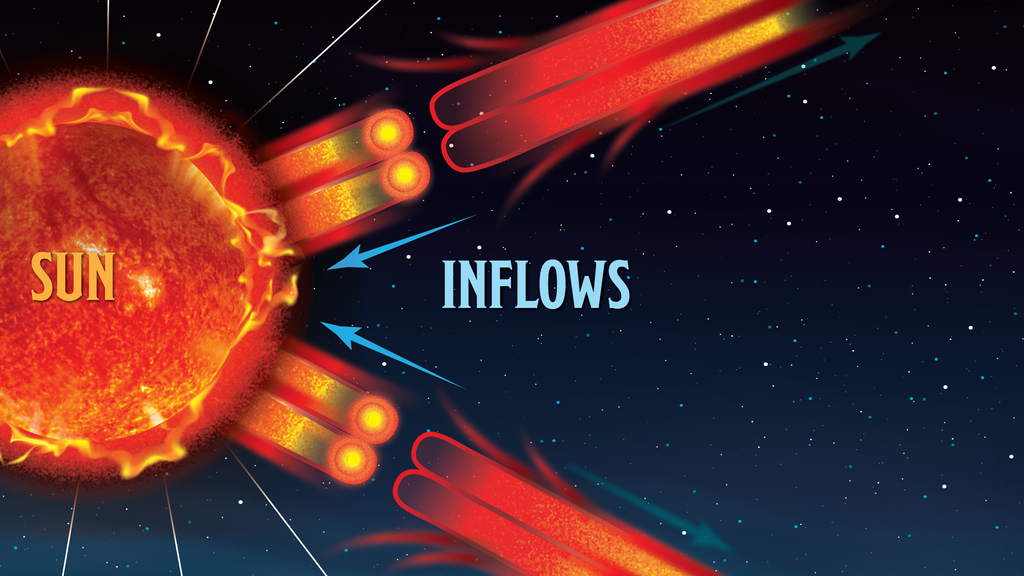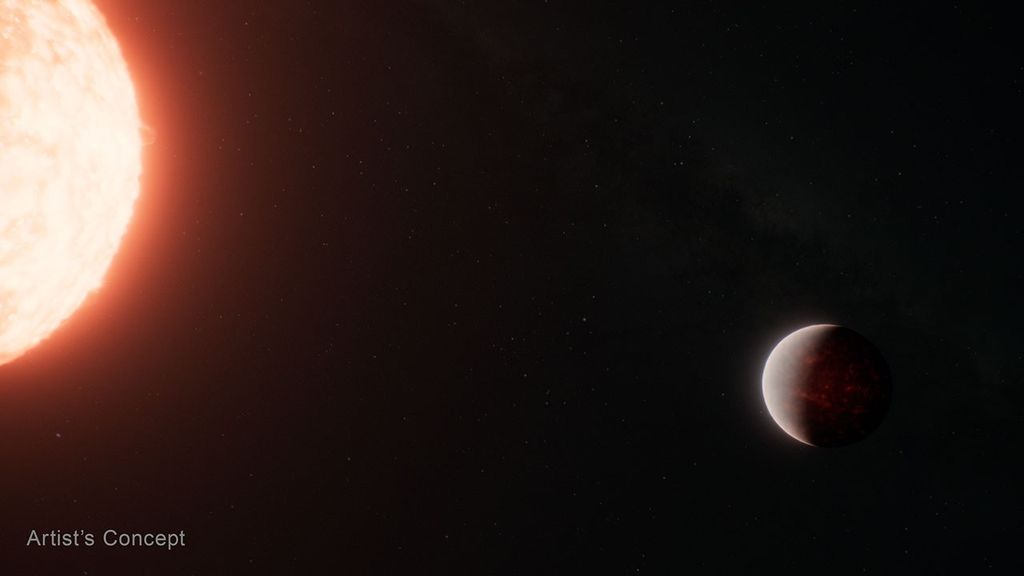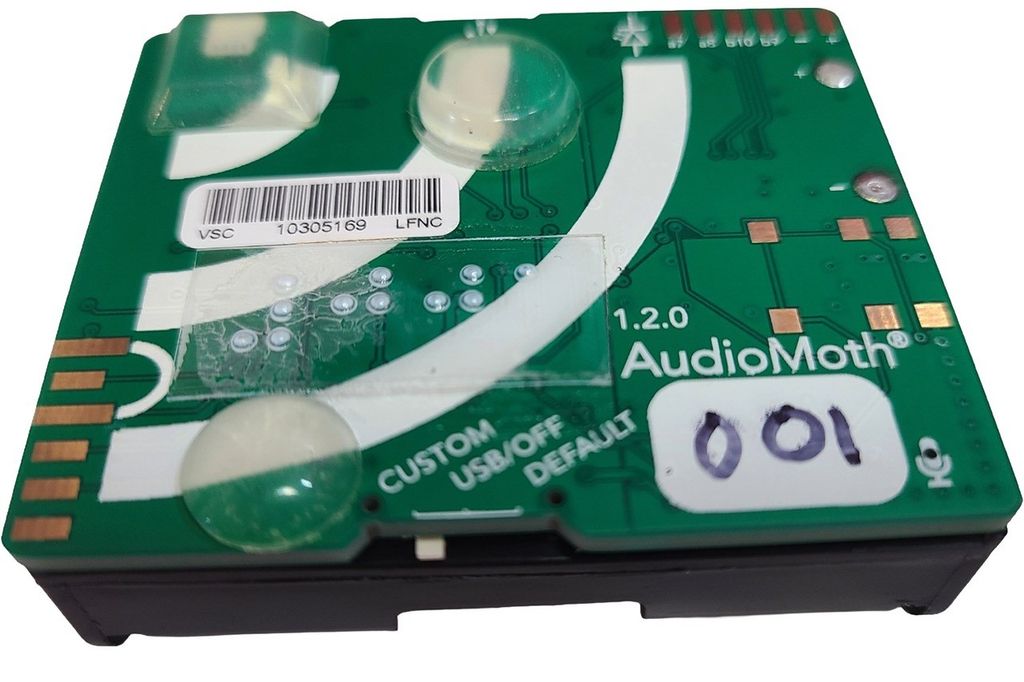1 min read
SN 1006 Supernova Remnant Expansion Comparison

Comparison of visible hydrogen emission in the NW filament of SN 1006 in data taken at the CTIO 0.9m telescope (H-alpha, continuum-subtracted; Winkler, et al.) in 1998 (shown in green), and the Hubble ACS data (Raymond et. al) in 2006 (shown in red). The stellar background is from WFPC2 broadband B, V, and I data from 2008 (Hubble Heritage Team).
About the Object
- R.A. PositionR.A. PositionRight ascension – analogous to longitude – is one component of an object's position.15h 2m 48.39s
- Dec. PositionDec. PositionDeclination – analogous to latitude – is one component of an object's position.-41° 54' 42.0"
- ConstellationConstellationOne of 88 recognized regions of the celestial sphere in which the object appears.Lupus
- DistanceDistanceThe physical distance from Earth to the astronomical object. Distances within our solar system are usually measured in Astronomical Units (AU). Distances between stars are usually measured in light-years. Interstellar distances can also be measured in parsecs.6,850 light-years or 2,100 parsecs
About the Data
- Data DescriptionData DescriptionProposal: A description of the observations, their scientific justification, and the links to the data available in the science archive.
Science Team: The astronomers who planned the observations and analyzed the data. "PI" refers to the Principal Investigator.HST Proposal: 10577 J. Raymond (Harvard- Smithsonian Center for Astrophysics), W. Blair (Johns Hopkins University), R. Sankrit (University of California, Berkeley), K. Korreck (Harvard-Smithsonian Center for Astrophysics), and P. Ghavamian (STScI) and 11017: K. Noll, H. Bond, C. Christian, L. Frattare, F. Hamilton, Z. Levay, M. Mutchler, and W. Januszewski (Hubble Heritage Team/STScI) and W. Blair (Johns Hopkins University). - InstrumentInstrumentThe science instrument used to produce the data.CTIO>Schmidt and HST>ACS/WFC and HST>WFPC2
- Exposure DatesExposure DatesThe date(s) that the telescope made its observations and the total exposure time.1998 (CTIO), February 2006 and April 2008, Exposure Time: 7.5 hour (HST)
- FiltersFiltersThe camera filters that were used in the science observations.WFPC2: F439W (B), F555W (V), and F814W (I) ACS: F658 N (H-alpha+[N II]) Schmidt
- Object NameObject NameA name or catalog number that astronomers use to identify an astronomical object.SN 1006, SNR 327.6+14.6
- Object DescriptionObject DescriptionThe type of astronomical object.Remnant from 1006 A.D. Supernova Event
- Release DateJuly 1, 2008
- Science ReleaseHubble Sees Stars and a Stripe in Celestial Fireworks
- Credit
Related Images & Videos

SN 1006 Supernova Remnant (Hubble)
A delicate ribbon of gas floats eerily in our galaxy. A contrail from an alien spaceship? A jet from a black-hole? Actually this image, taken by NASA's Hubble Space Telescope, is a very thin section of a supernova remnant caused by a stellar explosion that occurred more than...

Full-shell Image of SN 1006 Showing Location of Hubble Observations
This image is a composite of visible (or optical), radio, and X-ray data of the full shell of the supernova remnant from SN 1006. The radio data show much of the extent that the X-ray image shows. In contrast, only a small linear filament in the northwest corner of the shell is...
Share
Details
Last Updated
Aug 17, 2025
Contact
Media
Claire Andreoli
NASA’s Goddard Space Flight Center
Greenbelt, Maryland
claire.andreoli@nasa.gov





























